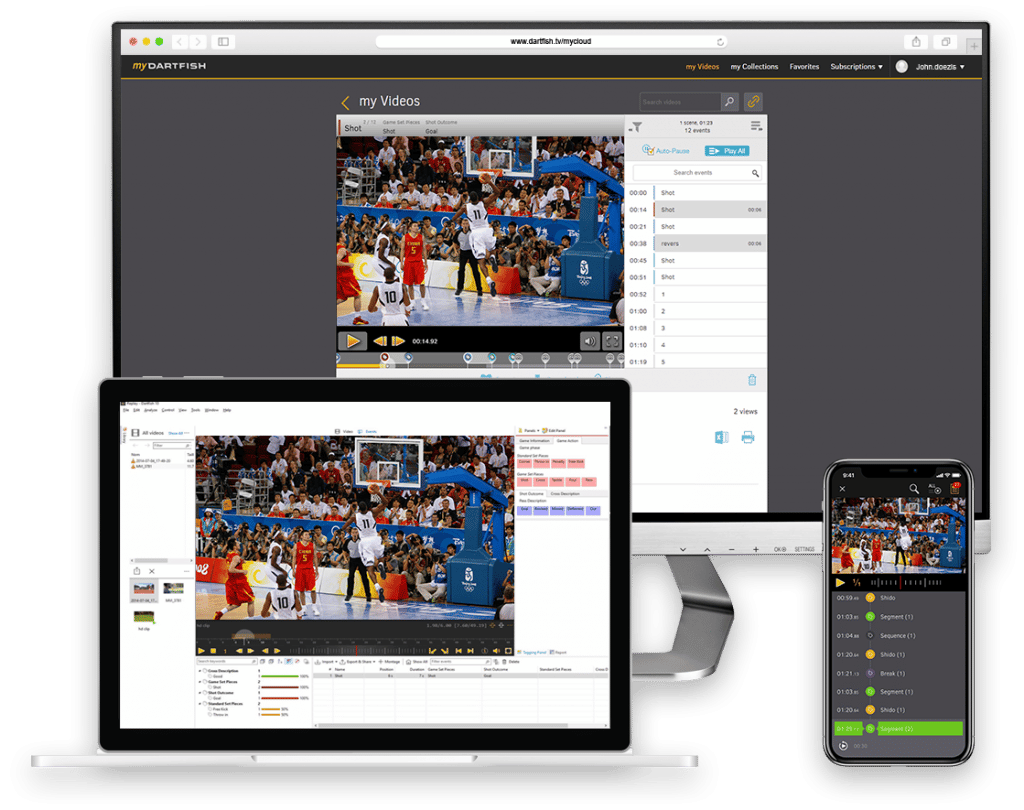When it comes to many major events, the chances of your video analyst getting a ringside seat are slim. Let’s make that zero chance if he has his camcorder with him. Smaller sports may not have the budget to put him/her on the plane in the first place but the good news for everyone is that an increasing number of events, large and small, are streaming their competition live over the internet. Their videographers are well-trained and do get ringside seats, covering the action from multiple angles. But how to capture their feed into video analysis software?
Sure, you could download the file or screen capture the video as it plays but if you want it on your dartfish.tv channel immediately after the contest is has happened or you want to use Dartfish Live Tagging to mark up salient events, our solution was to re-purpose a piece of hardware called the Live Gamer Portable from AVerMedia and build the capacity to capture from it into the latest Dartfish 9 software. As you can perhaps guess from its name, the LGP is used by gamers to record in-game action but in fact it can create a computer readable feed from any HDMI input, including the output from a camcorder.
What makes the LGP a better option than other video converters for capturing a web stream is that it has an HDMI output as well as an input. Of course it does. How else would a gamer see what or who he is defeating if the output from the gaming platform to the recording device isn’t also displayed on a screen? Furthermore that monitoring has to be in perfect real time if the gamer isn’t going to end up as something else’s lunch. So here is what the setup looks like:

The laptop display is put into its ‘extended’ mode. That means that the laptop’s screen and the secondary monitor function as one larger screen, albeit split between both, so the website or application displaying the video stream can be dragged across to the external monitor in exactly the same way that you can move windows and programs around your Windows Desktop. Now the video is put into full screen and in Dartfish you can start recording.
Using the secondary monitor simplifies things and it is useful to have that full-screen view while using Dartfish (to tag for example) on the laptop. But since the Live Gamer Portable itself is seen as a display device by Windows, you can drag the browser window over to it, using the Dartfish video display to see when it is in place. That is a little more tricky than it sounds but useful to know if using a second monitor is not an option.
If your objective is to make the tagged up recording available to athletes and coaches as soon as possible, you should use your dartfish.tv channel’s encoding profile. This will significantly reduce publishing time as re-encoding isn’t required during upload. You can get your channel’s encoding profile from the software’s Tools > Options > Encoding Profiles menus, then click the ‘Dowload’ button. Videos are also keyworded during capture so as soon as recording stops, publishing can start and, once online, the thousands of videos captured during the tournament are searchable and filterable.

For more information about using the AVerMedia Live Gamer Portable to capture a webstream, see the LGP guide. Also discover how the LGP can be used to capture a live stream from a camcorder.
Important
Screen recording devices such as the AVerMedia Live Gamer Portable should not be used to record protected content or otherwise infringe the copyright of event organizers or broadcasters. Doing so can be illegal.

Comments are closed.